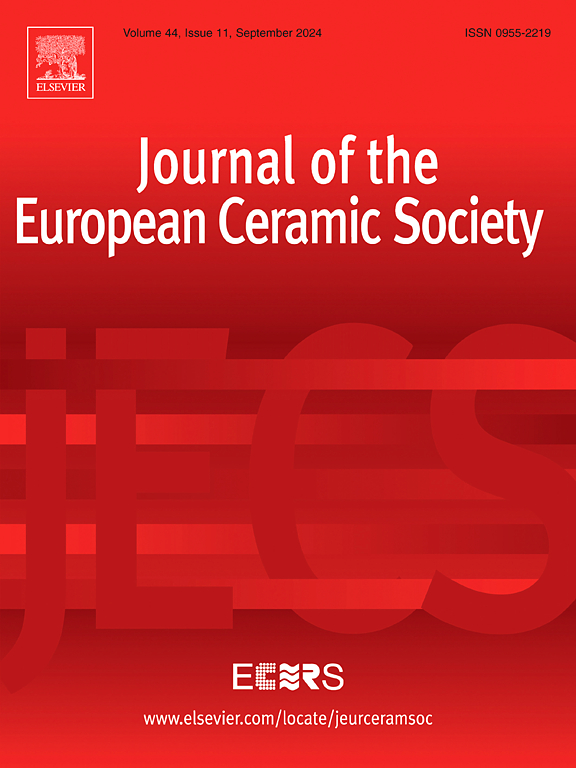Synergistic strengthening and toughening of alumina ceramic using two-dimensional MXene and graphene
IF 5.8
2区 材料科学
Q1 MATERIALS SCIENCE, CERAMICS
Journal of The European Ceramic Society
Pub Date : 2025-03-23
DOI:10.1016/j.jeurceramsoc.2025.117391
引用次数: 0
Abstract
The inherent brittleness of alumina ceramics often leads to unexpected catastrophic failures, which significantly limits their practical applications. However, improving toughness of alumina typically result in a compromise of its strength. Achieving both high strength and exceptional damage tolerance in alumina remains a formidable challenge. To overcome this issue, we have fabricated an alumina composite that combines high strength and toughness by integrating two-dimensional MXene and graphene through solution mixing and hot pressing methods. Specifically, the optimized composite demonstrates an approximately 20 % increase in flexural strength and a remarkable 521 % improvement in fracture toughness, highlighting its exceptional durability and resistance to sudden failure. Graphene significantly enhances fracture toughness through mechanisms such as crack deflection, microcracking, crack branching, and bridging. These mechanisms effectively extend the crack propagation path and reduce the risk of sudden failure. By contrast, MXene plays a crucial role in improving flexural strength by reducing grain size. This synergistic strengthening and toughening strategy reveals new avenues for developing high-performance ceramic composites.
求助全文
约1分钟内获得全文
求助全文
来源期刊

Journal of The European Ceramic Society
工程技术-材料科学:硅酸盐
CiteScore
10.70
自引率
12.30%
发文量
863
审稿时长
35 days
期刊介绍:
The Journal of the European Ceramic Society publishes the results of original research and reviews relating to ceramic materials. Papers of either an experimental or theoretical character will be welcomed on a fully international basis. The emphasis is on novel generic science concerning the relationships between processing, microstructure and properties of polycrystalline ceramics consolidated at high temperature. Papers may relate to any of the conventional categories of ceramic: structural, functional, traditional or composite. The central objective is to sustain a high standard of research quality by means of appropriate reviewing procedures.
 求助内容:
求助内容: 应助结果提醒方式:
应助结果提醒方式:


